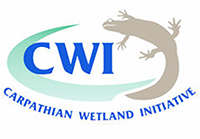RAMSAR CONVENTION ON WETLANDS
The Convention on Wetlands is a global agreement that helps countries protect and use wetlands wisely. Governments adopted it on 2 February 1971 in Ramsar, Iran. The treaty came into force in 1975. Its official name is “The Convention on Wetlands of International Importance especially as Waterfowl Habitat.” Today, 168 countries (as of May 2024) take part in the Convention and work together to conserve wetlands.
At first, the Convention focused mainly on wetlands as habitats for waterbirds. Over time, this focus expanded. The Convention now promotes the conservation and wise use of all types of wetlands. It recognizes wetlands as ecosystems that support rich biodiversity and help people in many ways. Wetlands clean water, reduce floods, store carbon, recharge groundwater, and offer space for recreation and cultural activities. They play a key role in adapting to and mitigating climate change.
A major part of the Convention is the Ramsar List, also known as the List of Wetlands of International Importance. Each country designates at least one wetland that meets strict international criteria. Today, the Ramsar List includes more than 2,180 sites. These areas cover over 208 million hectares worldwide. Countries commit to managing these wetlands carefully so they stay healthy and continue to support nature and people.
The main message of the Ramsar Convention is simple: wetlands matter. They are valuable for wildlife and essential for human life. By protecting wetlands today, we ensure safer, healthier and more resilient landscapes for future generations.
